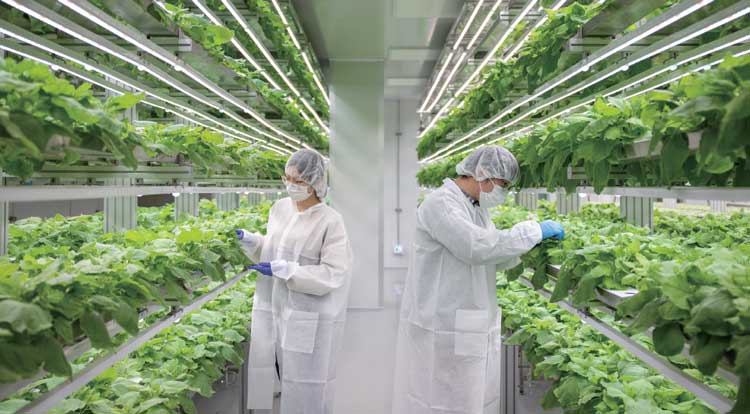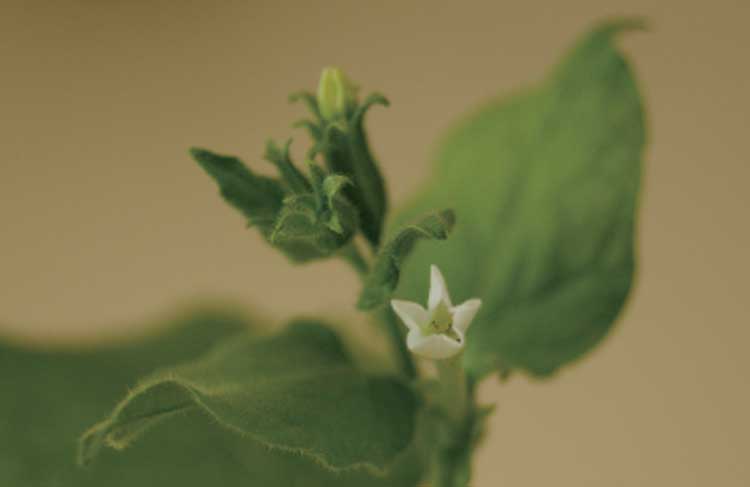
The World Health Organization (WHO) said that tobacco kills 8 million people a year. Of those, 1.3 million are people who are secondarily exposed to cigarette smoke from others. The once useless tobacco has been transformed into a savior that can save newborn babies. It is mass-produced by inserting genes that create breast milk nutrients into tobacco leaves. Tobacco leaves grow quickly and are easy to cultivate, so they can be of great help to underdeveloped countries with weak pharmaceutical production bases. They have already been used to produce COVID-19 vaccines and immune boosters.
Synthesis of oligosaccharides that feed the baby's gut bacteria
Professor Patrick Shih's research team from the Department of Plant Microbiology at UC Berkeley in the United States succeeded in producing oligosaccharides found in breast milk from 'Nicotiana benthamiana'. This plant, which is native to Australia, is a plant in the same genus as 'Nicotiana tabacum', which is used to make cigarettes for humans to smoke. The results of the research were published in the international academic journal 'Nature Food' on June 13 (local time).
There are about 200 oligosaccharides in breast milk. Oligosaccharides are also the third most abundant solid component in breast milk. Breastfed babies cannot digest oligosaccharides. Instead, they serve as prebiotics, which are food for the good bacteria that live in the baby's intestines for the first few weeks of life. When healthy intestinal bacteria grow in the baby's body, they prevent infections from pathogens such as viruses and bacteria.
The food industry already produces some human milk oligosaccharides by fermentation with E. coli. Oligosaccharide genes are inserted into E. coli to produce them. However, there are only a few types of oligosaccharides that can be produced by fermentation, and it is not easy to filter out impurities during the purification process.
The UC Berkeley researchers took advantage of the ability of plants to link simple sugars called monosaccharides into chains to create complex sugars like oligosaccharides. They genetically modified the plants to produce enzymes essential for assembling various human milk oligosaccharides from the monosaccharides. As a result, benthamiana tobacco leaves produced 11 types of human milk oligosaccharides.
“We have created all three major groups of human milk oligosaccharides,” said Professor Shi. “This is the first time that we have been able to demonstrate that these three groups can be created simultaneously in one organism.” The oligosaccharides produced by the tobacco leaf also include LNFP1, which prevents pathogen infection. This oligosaccharide is a complex sugar with five monosaccharides linked together, and it is a type that cannot be mass-produced using the E. coli fermentation method.
Shi and co-author Min-liang Yang, a professor of food science and engineering at North Carolina State University, estimated the cost of producing HMOs from plants on an industrial scale and found that it would likely be cheaper than microbial fermentation. “You could extract all the HMOs from the plants and add them directly to infant formula,” Shi said. “This could lead to cheaper formulas for babies and plant-based milks for adults.”


Production of COVID-19 vaccines and immune boosters
This research is the result of 'pharming (molecular farming)', which makes medicines from crops. Pharming is a word combining the English words pharmaceutical and farming. Tobacco leaf farming has made a brilliant contribution in the war against COVID-19. In addition to synthesizing the virus protein for vaccines from tobacco leaves, they have also created an immune booster that enhances the immune response.
Previously, Japan produced a flu vaccine from tobacco leaves, and a domestic company, BioApp, produced a vaccine against the swine fever virus from tobacco leaves for the first time in the world. Kentucky Bioprocessing (KBP) in the United States also participated in the development of the Ebola treatment 'ZMapp' with Canada's Medicago in 2014. ZMapp consists of three types of antibodies that attack the Ebola virus, all produced from Benthamiana tobacco leaves. In 2018, researchers at Arizona State University in the United States succeeded in producing a norovirus vaccine from tobacco leaves. Norovirus infects 700 million people every year, and 200,000 of them die.
Medicago, a Canadian biotechnology company, and GlaxoSmithKline (GSK), a British pharmaceutical company, received approval in Canada for the world's first tobacco leaf-based COVID-19 vaccine, COVI-FENZ, in February 2022. Medicago produced virus-like particles by inserting the COVID-19 virus gene into Nicotiana benthamiana. It was also supplemented with GSK's immune booster.
The particles extracted from tobacco leaves by Medicago look exactly like viruses, but they do not have genetic material, so they do not replicate when they enter the human body. That makes them very safe. An even bigger advantage is speed. If you inject a virus into eggs like a flu vaccine to make a vaccine, it would take six months, but the tobacco leaf vaccine only takes six weeks. Moderna's COVID-19 vaccine, which uses gene synthesis, is also produced at a similar speed, but mass production is much easier with plant cultivation.
The John Innes Centre, a private research institute in the UK, announced in 2023 in the international academic journal 'Science' that "saponin, an immune-enhancing agent, was biosynthesized from tobacco leaves." Among the saponins extracted from the Quillaja tree, QS21 is used in vaccines for shingles and malaria, and QS7 and QS17 are included in the COVID-19 vaccine.
The John Innes Center researchers implemented the saponin biosynthesis pathway in tobacco leaves, not in the chiraya tree. The chiraya tree needs to be more than 10 years old to produce chiraya saponin, making it difficult to meet global demand. On the other hand, tobacco leaves grow quickly enough to be harvested in a month, making mass production easy. The researchers produced saponin by inserting 14 enzyme genes involved in chiraya saponin production into benthamiana via soil bacteria. In the distant future, our descendants may think of medicine that saves people rather than smoke that harms people when they think of cigarettes.